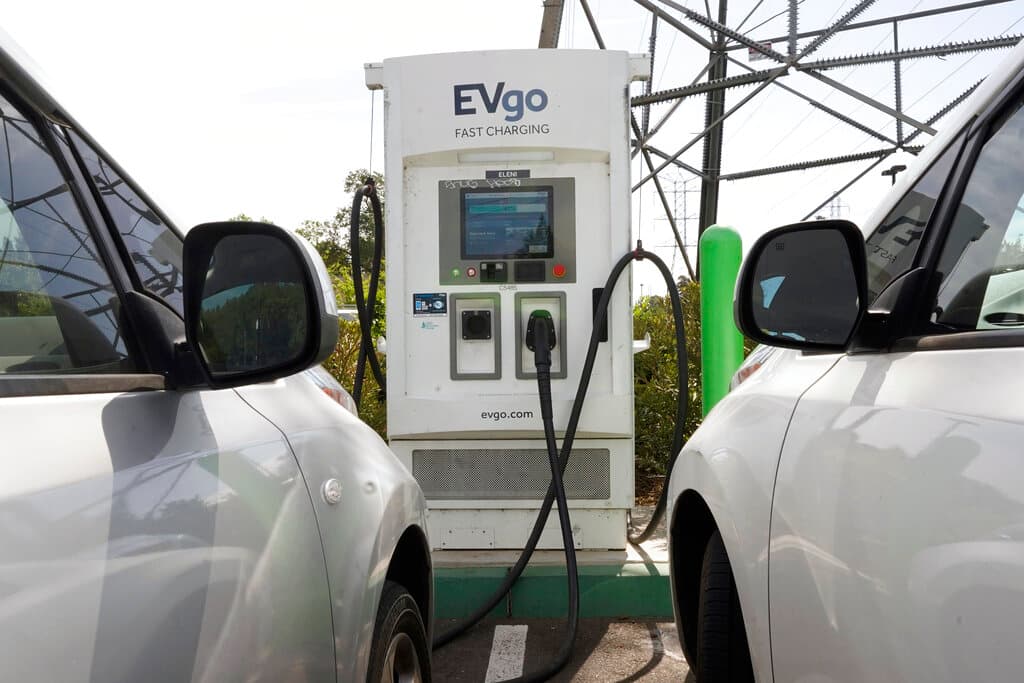The Shocking Reality Behind California’s Buzz About Electric Cars
The war on the internal combustion engine will lead to a future that looks like Communist Cuba’s present, where old, polluting jalopies are kept on the road, and their price tags skyrocket as demand rises.

California is mandating an end to gasoline-powered cars. But by putting the cart before the horse when technology and infrastructure don’t yet exist, they may do more damage to the environment than good and cause more pain for their citizens.
The California Air Resources Board is mandating that all new cars sold be free of greenhouse gas emissions in 13 years, and that 35 percent of new passenger vehicles produce zero emissions by 2026.
The wealthy will have no trouble purchasing EVs, but their cost runs far beyond that or vehicles powered by the internal combustion engine which Governor Newsom has declared on the road to extinction thanks to the new rules.
This will lead to a future that looks like Communist Cuba’s present, where old, polluting jalopies are kept on the road, and their price tags skyrocket as demand rises.
This runs contrary to the vision EV boosters promise will arrive once we stop smelling the fuel pumped into our tanks and can ignore the damage wrought by manufacturing batteries to make them go vroom-vroom.
But the electricity in a wall outlet doesn’t come from a tiny, carbon-neutral hamster on a wheel. Fossil fuels produced 60.8 percent of America’s electrical needs in 2021 and 50.1 percent of the Golden State’s.
It’s just a question of whether the emissions are spewing out of a tailpipe or smokestack. In fact, since 21.8 percent of generating plants rely on Old King Coal, one-in-five EVs is a coal-powered car.
And the electrical demand to supply houses, businesses, agriculture, etc. will remain the same or increase, as thousands of new cars are plugged into the grid. From where is that additional capacity going to come?
California’s infrastructure is already strained. As the AP reported in May, “State models assume the state will have 1,700 fewer megawatts of power than it needs during the times of highest demand…”
Peak usage is after sunset, which is when people planning to drive to work the next morning will be plugging in for the hours EVs require to charge.
Consider the experience of Rachel Wolfe’s 2,000-mile trip in a Kia EV6 from New Orleans to Chicago. As she recounted in the Wall Street Journal, “I spent more time charging it than I did sleeping.”
Furthermore, California is earthquake country. Other regions suffer from hurricanes, blizzards, floods and similar disasters that can knock power plants offline, rendering EVs useless, including those of first responders.
It’s because of these manifest benefits that the internal combustion engine surpassed the early automobiles, which also ran on electricity.
Those batteries are a huge area of concern. The Revelator warned last year, “Materials needed to make the batteries for electric cars and other clean technology is driving interest in deep-seabed mining, and scientists fear the cost to the ocean will be steep.”
The Guardian found similar concerns, reporting that, “[W]hile the E.U. focuses on emissions, the lithium gold rush threatens environmental damage on an industrial scale.”
As Mark Putzer wrote in MotorBiscuit last month, “EV Car Batteries Destroy the Environment and Violate Human Rights.” Their production uses “a great deal of water [and] causes water, soil, and air pollution.”
But amid President Biden’s push for EVs, Ford Motor Co. announced that it plans to boost purchases from Contemporary Amperex Technology Company Limited in Communist China, which cares little for environmental impact.
“This raises concerns,” members of the House Oversight Committee wrote, “about whether the push for EVs over gas-fueled vehicles will make America even more reliant on the Chinese Communist Party instead of American energy resources.”
Ford has little choice, with CATL holding a third of the world’s EV battery market as Beijing builds a monopoly in rare-earth metals like lithium and cobalt.
A cleaner future is something we all want, but governments can’t legislate it into being, any more than they could have outlawed horses to boost the transition to automobiles.
American innovation spurred our evolution from streets choked with manure. We can put our faith in those same market forces today, rather than try to mandate electric horseless carriages for a green dream that turns into a nightmare.

